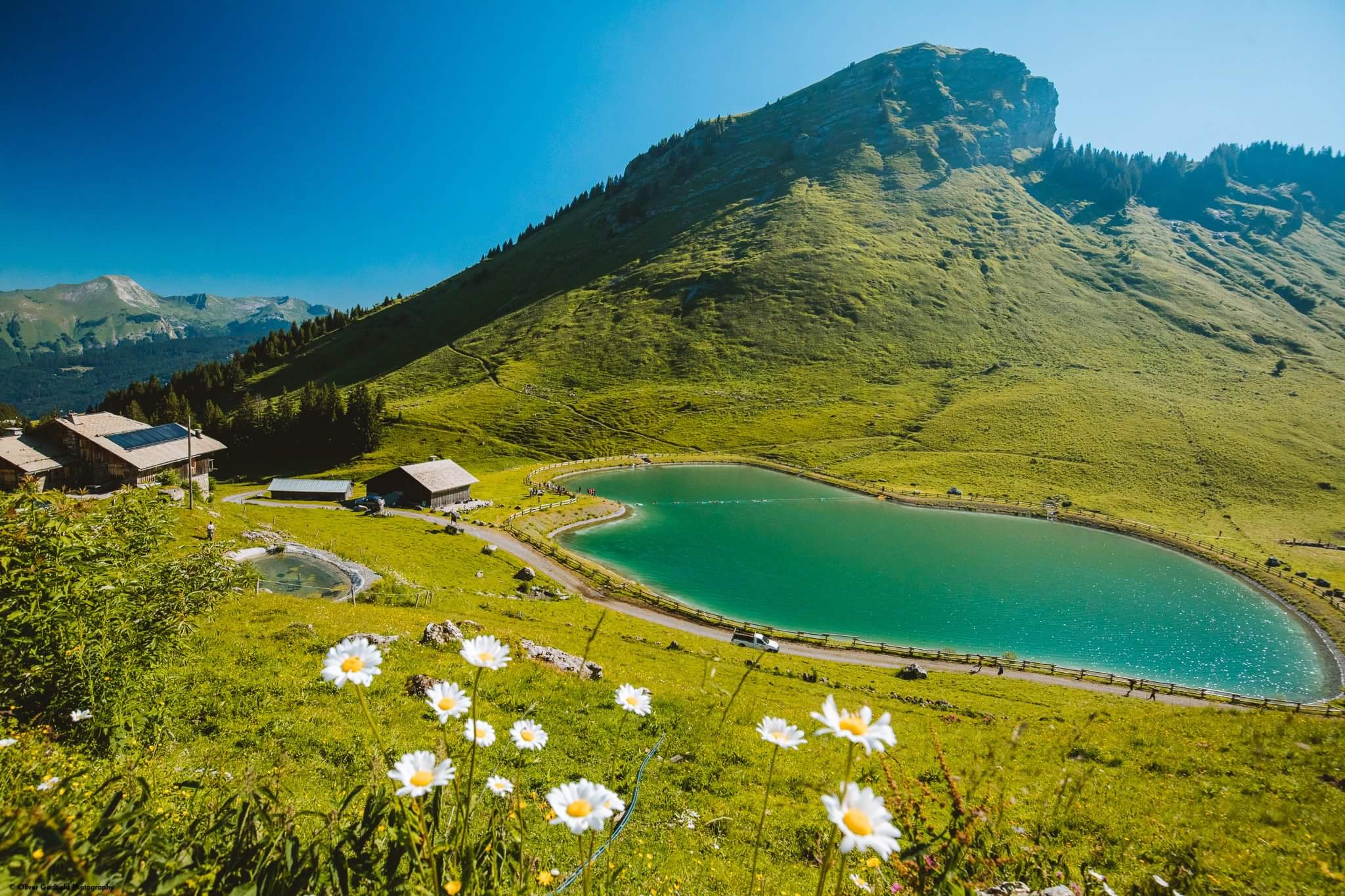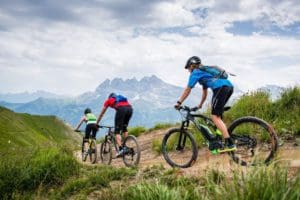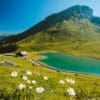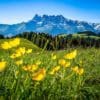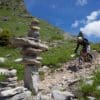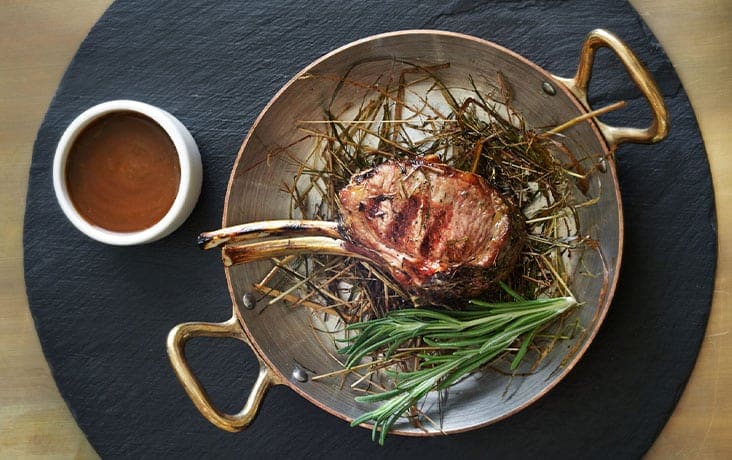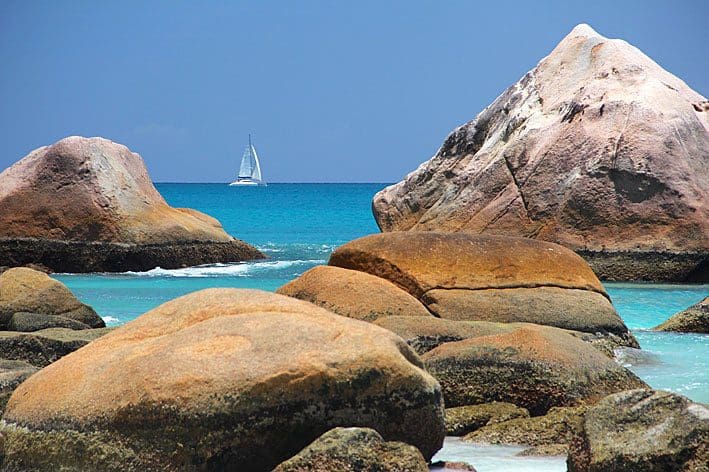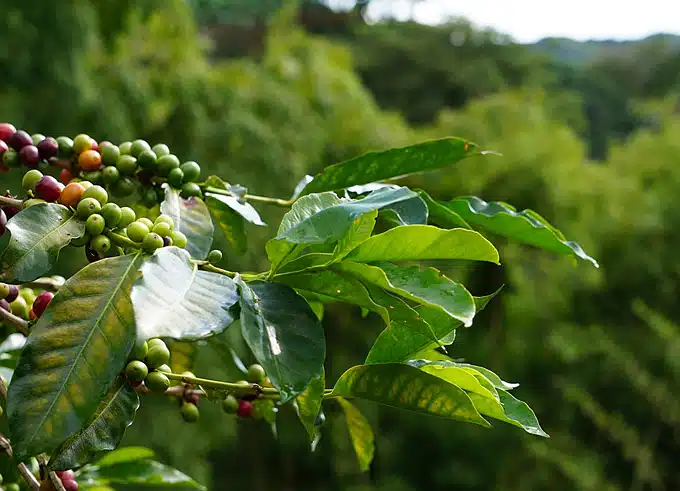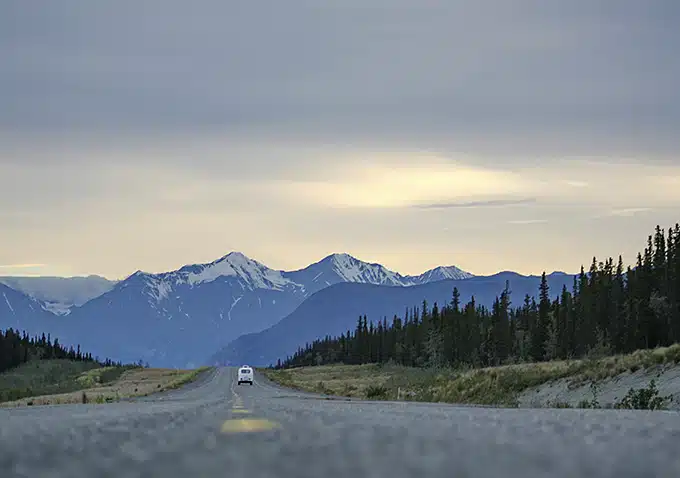Words: Neil Geraghty
For the lazy at heart e-biking might seem a like a stroll in the park.
But when you’re on an electric mountain bike in the French Alps, don’t be lulled into a sense of false security.
I’m participating in a group ’emtb’ ride through the idyllic mountains surrounding the charming Alpine town of Morzine in Haute Savoie. The tour is led by local born ski instructor Guillaume Rosset, an affable and laid-back guide who, like many French ski instructors, exchanges his skis in the summer for a mountain bike.
The e-bike has four simple functions, the most useful of which is automatic which gives you welcome turbo boosts as and when you need them. The first twenty minutes of the ride is a scenic treat that takes us along Alpine pastures where chestnut coloured Abondance cattle interrupt their grazing to stare at us with huge inquisitive eyes.
The rough cycle track then enters a pine wood and the strobing effect of the sunlight through the branches suddenly makes navigating doubly difficult. The track then plunges down into a dizzying 45° descent and its only now that the true skills of a mountain biker come into play. The e-functions are of little use when you go downhill and for novices, this sudden lack of control can be terrifying. With my hands clutching the brakes I swerve to the left to avoid a large stone and am completely thrown off balance.
‘Keep your eyes fixed on the path ahead’, a more experienced rider shouts from behind.
‘Straighten your legs on the peddles. This will give you more balance’, adds Guillaume who is confidently hurtling down the hill ahead of me.
But it’s too late. I’ve hit a furrow and my feet are flailing around like a Quidditch player coming in for a crash landing.
Morzine and the surrounding villages are a magnet for ex-pats, many of them British, who have ditched the rat race for a simple, healthier lifestyle amongst some of Europe’s most spectacular mountain scenery. Lindsey Rodriguez is typical of this expat community. Years ago, as a Thomas Cook ski rep, she fell in love with the region, fell in love with a ski instructor and hasn’t looked back since.
Nowadays she runs Chalet Morzine with her husband Thierry whose family has been in the Morzine hotel business for three generations. His grandfather emigrated from Spain in the early 20th Century and at the start of the skiing boom built a hotel and chalet.
Hospitality comes naturally to these long established family businesses and Thierry is keen to show me the chalet where his Grandparents lived. We hop into his car and drive up a winding mountain lane to Graydon, a picturesque hamlet of traditional wooden chalets set in a amphitheatre of precipitous mountain slopes. The chalets were originally farmers’ cottages and although the majority have now been converted into comfortable holiday retreats, the rhythmic chiming of cow bells from a herd of cattle grazing in a nearby field casts a soporific echo of times gone by over the village.
Outside of the busy skiing season, life in the French Alps slows down a notch or two. It’s a chance for the hotels to run summer wellness programmes. The next day l go for a pre-breakfast pilates session on Chalet Morzine’s outdoor terrace. We start with some breathing exercises and the clean mountain air scented with fresh Alpine herbs instantly dissolves the underlying tension in my muscles.
The pilates session is an ideal way to limber up for a day of outdoor activities and after breakfast I head for the high Alpine meadows. During summer, Morzine and the eleven surrounding resorts of the Portes de Soleil offer an excellent value Multipass. For 2€ a day, visitors in participating hotels can enjoy unlimited use of the regions’ ski lift network.
At the skiing station above Morzine I join Veronique Fillon for a guided hike to La Tapiaz, her family’s mountain refuge, where she cooks local specialties using foraged Alpine ingredients. With a twinkle in her eye she opens her rucksack and offers us some home made sable biscuits infused with wild thyme, a mouth watering combination of buttery sweetness and fragrant bitterness. Along our route she stops to point out some of her favourite ingredients including mountain spinach, wild garlic and silvery water mint growing by a stream.
As we pass herds of grazing cattle, Veronique explains that each valley in the region produces its own cheese. The milk from these particular cows is used to produce the famous reblochon of tartiflette fame. At Veronique’s rustic mountain refuge set amidst a meadow of lupins she treats us to variant of tartiflette, a gooey baked delight of reblochon, onions and potatoes. Scooped up with freshly baked bread I can feel my cholesterol readings soar above the Alpine peaks. But who cares. If I drop dead of a heart attack, at least I’ll die happy.
Back on the bike, my confidence takes a nose dive so I dismount and walk downhill with my tail between my legs. It takes several attempts for me to master the downhill technique but towards the end of the ride I’m locking my knees, fixing my gaze straight ahead and, albeit shakily, managing to speed downhill at quite a pace. We turn a corner and a magnificent view of Mount Blanc unfolds, its snow capped peak wreathed in wispy clouds. We spend the night at Guillaume delightful mountain refuge originally built by his Grandfather as a hunting lodge. Surrounded by a fine collection of deer heads staring down from the walls and listening to a solitary owl hooting in the nearby forest I fall into a comatose sleep.
For my final hike I head to the high Alpine meadows above the skiing resort of Les Gets. There I meet Michel Rostalski, an enthusiastic naturalist who has spent the last few years learning about mountain herbs and recreating traditional alpine remedies.
The summer meadows of the Alps are home to one of the richest biodiversities of flora in Europe and the fields are ablaze with margherites, harebells and wild geraniums. We stop in a field of shimmering yellow flowers that resemble miniature sunflowers. They’re wolfs bane or arnica, an Alpine cure all with powerful anti inflammatory properties.
At the end of the hike Michel surprises us all by whipping out of his rucksack a portable burner, some bees wax, olive oil, a jar of wolfs bane infusion and some extracts of scented herbs. He lights the burner, throws in the bees wax and olive oil to melt and then mixes in the other ingredients. A heavenly smell resembling herb scented tiger balm fills the air and he pours the mixture into small jars for us to take home.
Back in London the city streets are choking in a polluted summer heat wave but every time I open the jar I’m transported back to the clean air and healthy lifestyle of summer in the French Alps.
For more information on France and the French Alps visit www.uk.france.fr
For Morzine visit http://en.morzine-avoriaz.com/ and Les Gets visit www.lesgets.com

